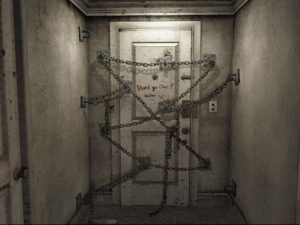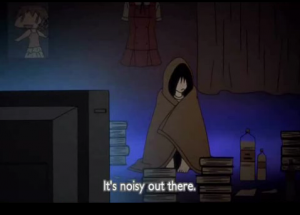THE HIKIKOMORI PHENOMENON: TEENAGERS (AND NOT) LOCKED IN THE HOUSE
 The Japanese psychiatrist Tamaki Sait¯o, coined the term hikikomori , to name a condition characterized by a state of avoidance of social contact (school/education, work, friendships ), with a persistent withdraw in one’s home for at least six months .
The Japanese psychiatrist Tamaki Sait¯o, coined the term hikikomori , to name a condition characterized by a state of avoidance of social contact (school/education, work, friendships ), with a persistent withdraw in one’s home for at least six months .
The phenomenon was initially described in Japan, and in the past it was believed that it was mainly conditioned by the socio – cultural context ; however, over time new cases of hikikomori were disclosed in other nations , geographically and culturally distant from Japan, among these, Italy.
It is important to underline that this phenomenon of total isolation was not born in Japan (although it is very common in this country for socio-cultural reasons); it already existed and was a clinical problem before a specific term was coined for it.
In Italy 3000 youngsters are affected of this pathology. One each 250 is at risk of social reclusion, today 50 of them are declared and are already under treatment.
PRIMARY OR SECONDARY HIKIKOMORI?
The hikikomori phenomenon, nowadays largely studied in psychology, is very wide and heterogeneous: however we can distinguish between primary and secondary hikikomori.
The latter refers and includes individuals who suffer from a wide category of severe psychiatric disorders such as mood disorders, anxiety disorders, obsessive-compulsive disorder, personality disorders and pervasive developmental disorders.
The term primary hikikomori refers instead to a manifestation of the phenomenon that cannnot be described using concepts which refer to psychiatric disorders. That is to say that those who suffer from it are not diagnosed with any kind of serious psychopathology, but at the same time fail to enter into society and adapt.
Special attention should be given to those –(many) – cases of individuals who are totally isolated, and, at the same time, have a serious addiction to computer/or videogames. What is the cause and what is the consequence? Is it the computer addiction that causes isolation, or is it the isolation that causes the addiction?
Actually, the distinction may be relevant for some purposes among which scientific research, in order to have a greater insight into the phenomenon, but what is really important is the deep understanding of the specific suffering of each individual, which must be contextualized also considering the existential journey of the person.
Each patient is in fact “a universe unto itself,” complex: many elements and many factors (biological, social, psychological) can combine and interact to give place to the psychological “interruption” of the hikikomori.
IS THERE A WAY OUT?
An integrated approach is definitely recommended: psychologist and psychiatrist together can deal efficiently with the clinical factors that characterize the specific situation of the individual.
Only taking care of the individual in his/her complexity, comprehending also his/her existential crisis will be possible to facilitate the beginning of a new path towards a better well-being.
**********************************************
Below you can find the contacts of our professionals, also available for TREATMENTS AT THE HOUSE OF THE PATIENT also in English and Spanish.
- Psychiatrist Licia Lietti: +39 338 5019524 (italian and english)
- Clinical psychologist Martina Trinchieri: +39 393 5564912 , martinatrinchieri90@gmail.com (italian and english)
- Clinical psychologist Martina Larsen Paya: +39 349 1696270, martinalarsenpaya@gmail.com (italian, english, spanish) http://larsen-paya-psicologa.com/?lang=en
- Psychotherapist Marcello Florita: click here to see the website, +39 348 795 5929 (only italian)
**********************************************
Some of the content on this page, refer to the following articles:
FRANCESCO DE MICHELE, MARIA CAREDDA, ROBERTO DELLE CHIAIE, MASSIMO SALVIATI, MASSIMO BIONDI, Hikikomori (ひきこもり): una culture-bound syndrome nell’era del web 2.0, Riv Psichiatr 2013;48(4):354-358
Suwa M, Suzuki K. Psychopathological features of “primary social withdrawal”. Psychiatria et neurologia Japonica 2002;104:1228-41 (in Japanese)





